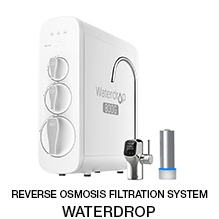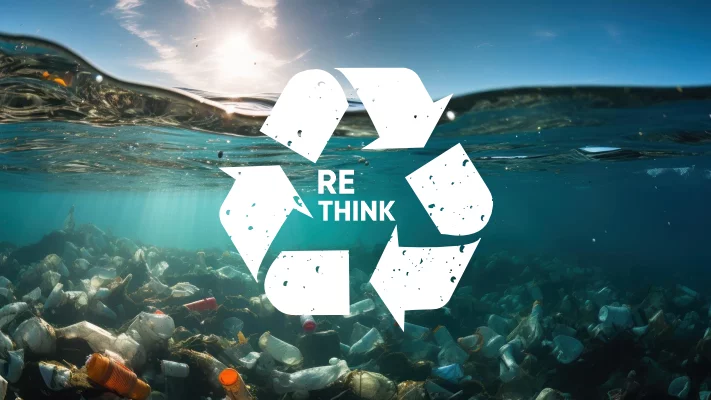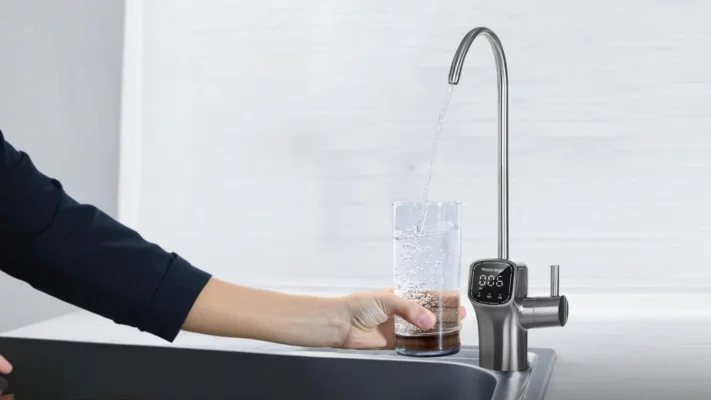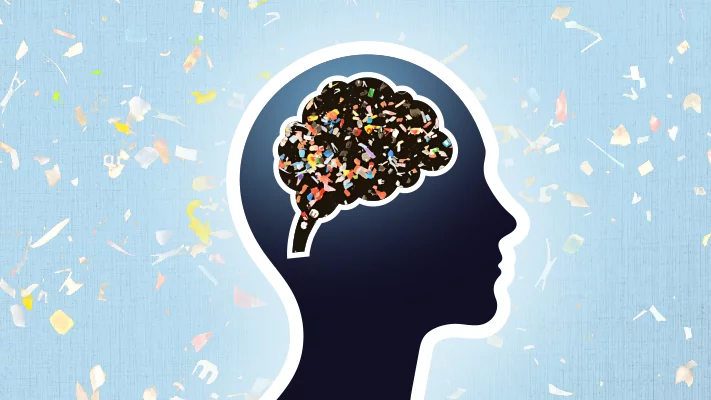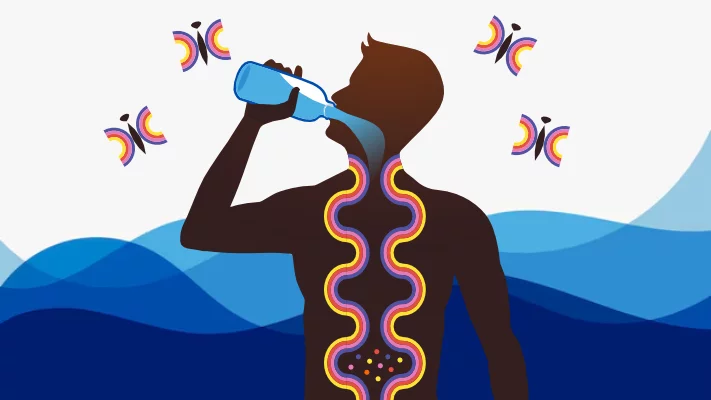- Recycling Reality: Less than 10% of plastic waste is actually recycled, with most ending up in landfills, incinerated, or in the environment, challenging the effectiveness of recycling as a solution.
- Global Impact: Much of the plastic waste is exported to developing countries like Indonesia, where it contributes to pollution and health risks through landfill dumping and burning.
- Balanced Approach: While plastics are essential in many aspects of life, reducing reliance on single-use plastics and adopting sustainable habits, such as using Waterdrop RO filters, can help lower environmental impact.
- Waterdrop RO Filters: By using Waterdrop RO filters, consumers can significantly reduce their dependence on plastic bottles, which not only cuts down on plastic waste but also minimizes the carbon footprint associated with the production, transportation, and disposal of bottled water. This more sustainable option helps protect the environment while providing clean, safe water at home.
We’ve all heard the mantra: Reduce, Reuse, Recycle. For decades, recycling has been presented as a solution to the growing problem of waste, particularly plastic waste. But what if recycling isn’t the silver bullet we’ve been led to believe? The reality of recycling, especially plastics, is far more complex—and less effective—than most of us realize.
The Reality of Recycling Plastics
Despite the iconic recycling symbol on countless plastic items, only a small fraction of plastic actually gets recycled—less than 10%, according to recent reports. Most plastic waste ends up in landfills, incinerators, or the environment. Even when collected, many plastics can't be processed due to contamination or complex material composition, making single-use plastics like packaging and bottles particularly problematic.
The economic challenges of recycling also contribute to its ineffectiveness. It’s often cheaper to produce new plastic from fossil fuels than to recycle, making recycling more of a feel-good gesture than a functional solution.
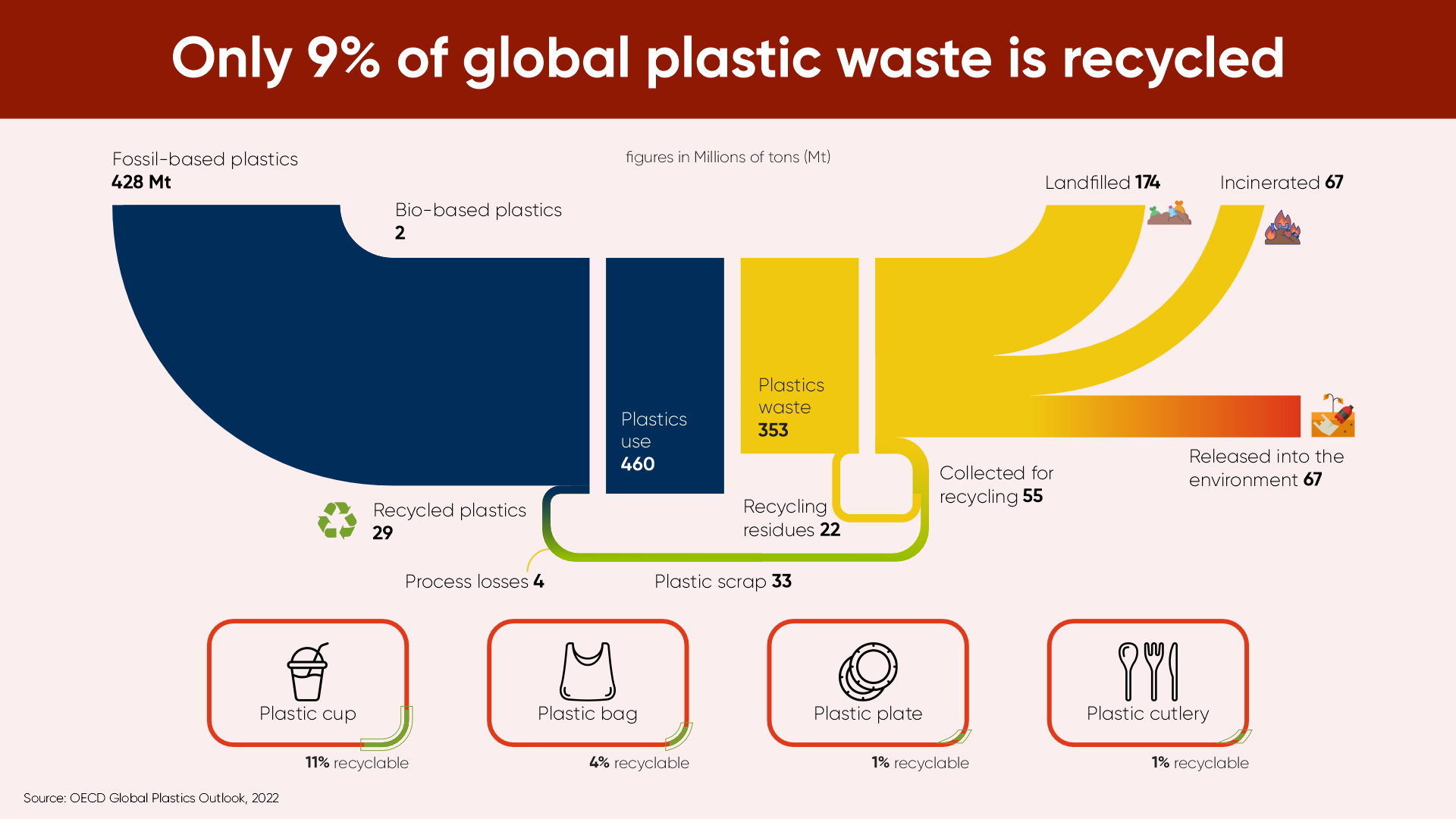
The Global Cost: Impact on Developing Nations
An overlooked aspect of the recycling myth is the fate of plastic waste that isn’t processed domestically. A significant portion is shipped to developing countries like Indonesia, where it’s dumped in landfills or burned, contributing to environmental degradation and health risks from pollution. These countries bear a disproportionate burden of waste they didn’t produce, highlighting global inequities in waste management.
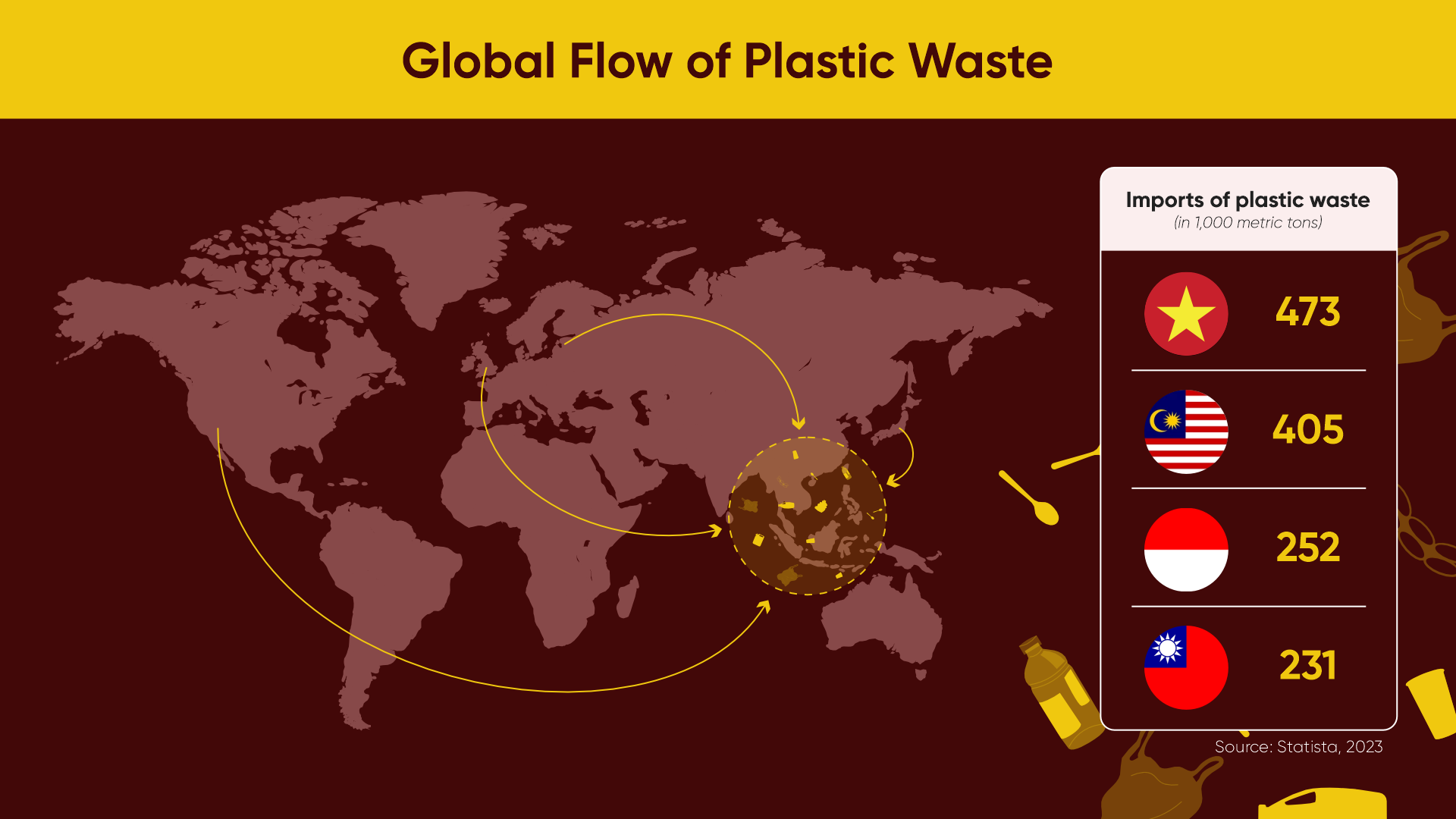
The Necessity of Plastics
Despite these issues, it’s important to acknowledge that plastics are crucial in modern society. From medical supplies to food preservation, plastics are indispensable due to their durability, versatility, and lightweight properties. However, this convenience has led to the widespread use of single-use plastics, which are the most problematic in terms of waste.
A Balanced Approach: Reduce, Rethink, and Adopt Solutions
So, if recycling isn’t the full answer, what can we do? The key is rethinking our relationship with plastics and adopting more sustainable habits. Reducing our reliance on single-use plastics is critical. For example, instead of buying bottled water, consider using home water purification systems like Waterdrop RO filters. These systems provide cleaner, safer water at home and help reduce plastic bottle waste.
However, it’s essential to recognize that even Waterdrop RO filters aren’t without environmental costs. Their production, maintenance, and disposal involve energy and resources, and filters need to be replaced periodically. But when considering the overall impact, these systems can reduce the environmental burden associated with bottled water—especially over the long term—by cutting down on the production, transportation, and disposal of plastic bottles.
Lowering our overall consumption is another crucial step. By being mindful of the products we buy and how we use them, we can significantly cut down on waste. For example, opting for reusable bags and containers can dramatically reduce plastic use. But even well-intentioned actions can have unintended consequences. Reusable bags, for instance, require resources to produce and clean, and many people forget to bring them, leading to more waste. The key is balance—choosing durable, multi-use bags and making a habit of using them while minimizing washing when possible.
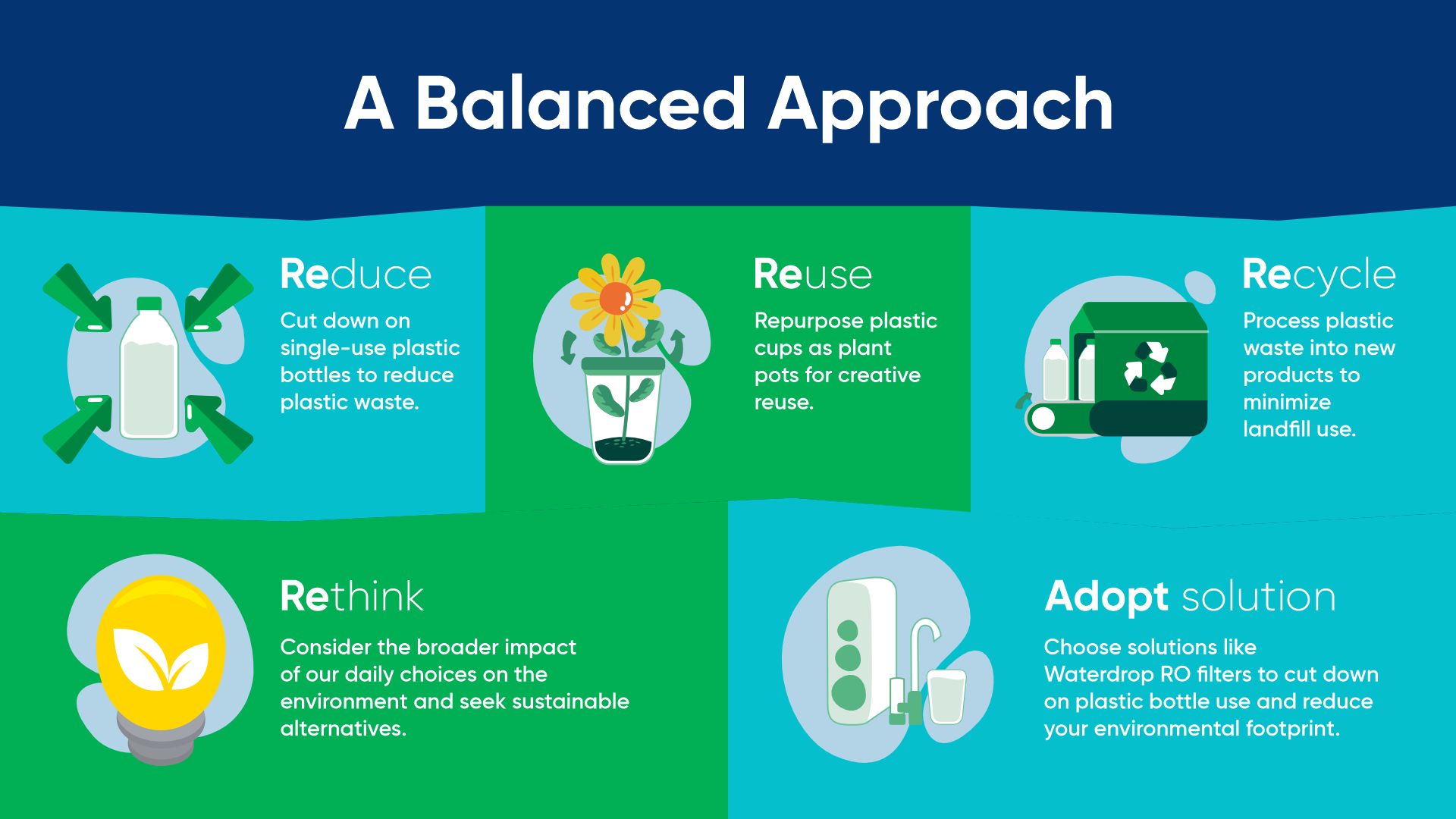
Avoiding Virtue Signaling and Making Real Impact
To avoid virtue signaling and make a genuine impact, focus on practical, sustainable habits that fit into your daily life. Small, consistent actions—like using Waterdrop RO filters, minimizing plastic use, and reducing packaging waste—can add up over time. Remember, progress is the goal, not perfection. If you occasionally use plastic, don’t be discouraged. What matters is the overall effort to make more sustainable choices whenever possible.

The Road Ahead: A More Sustainable Future
The recycling myth doesn’t mean we should abandon recycling, but it highlights the need for a more nuanced approach. Recycling can be part of the solution, but it’s not the only one. By reducing plastic consumption, rethinking our habits, and embracing alternatives like Waterdrop RO filters, we can make a real difference.
Ultimately, the goal is to shift from a disposable mindset to one of sustainability. While plastics may be necessary, we can—and should—strive to minimize their impact on the environment. In doing so, we can help build a future where our consumption is more balanced with the planet’s resources.
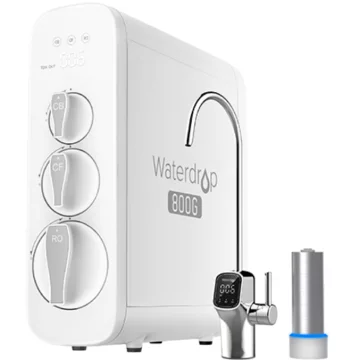 Waterdrop G3P800 Reverse Osmosis Water Purifier with UV Sterilizing Light (Filter Air Minum RO)Special Price Rp. 17,296,000 Regular Price Rp. 18,800,000
Waterdrop G3P800 Reverse Osmosis Water Purifier with UV Sterilizing Light (Filter Air Minum RO)Special Price Rp. 17,296,000 Regular Price Rp. 18,800,000
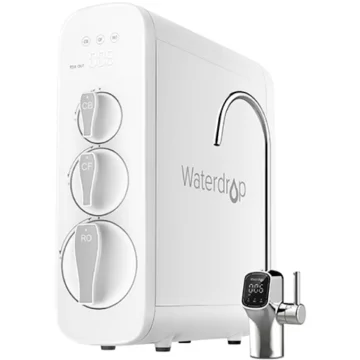 Waterdrop G3 Reverse Osmosis Water Purifier (Filter Air Minum RO)Special Price Rp. 13,708,000 Regular Price Rp. 14,900,000
Waterdrop G3 Reverse Osmosis Water Purifier (Filter Air Minum RO)Special Price Rp. 13,708,000 Regular Price Rp. 14,900,000


